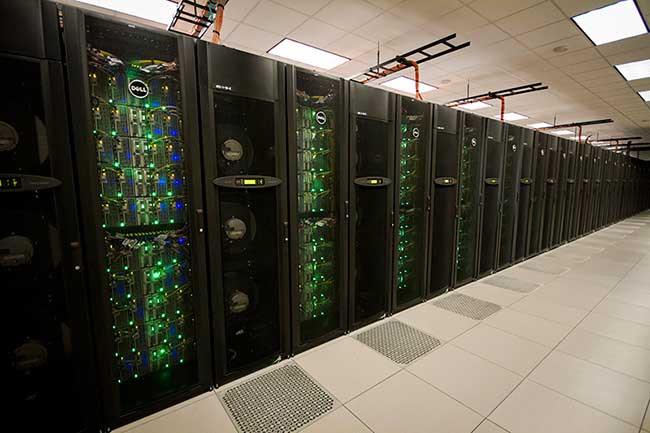Tecplot’s large-data initiative began several years ago. We’ve spent tens of thousands of developer-hours on removing barriers to large-data visualization: adding parallelization (threading) of performance critical code, optimizing algorithms, and optimizing I/O. Since then, we’ve improved the large-data capabilities of Tecplot 360 dramatically. For example, with Tecplot 360 2014 Release 2, the creation of an iso-surface for a particular one billion cell data set is two orders-of-magnitude faster than it was with Tecplot 360 2013 Release 1. Still, we are not satisfied!

Figure 1. Tecplot intends to meet the Trillion Cell Challenge using an engineering workstation like this.
Trillion Cell Grand Challenge
Today I’d like to describe an internal Tecplot initiative called the Trillion Cell Grand Challenge. This blog describes the Challenge, and future blogs will explain why we chose this Challenge, the major obstacles to visualizing one trillion cells, our approach to the problem, and our results to date (spoiler: we’ve done 300 billion cells so far). But today, I just want to give you the details of the Challenge.
The Challenge
By the end of 2015, Tecplot will visualize a finite-element data set containing one trillion tetrahedral cells—using slices, iso-surface, and streamtraces. Furthermore, Tecplot intends to do this visualization using an engineering workstation like this one. Figure one is actually a picture of my work computer, a Dell Precision T7610 containing dual 8-core Intel Xeon processors, an NVIDIA Quadro K4000 video card, 128GB of memory, and a 16TB
Raid5 external hard-disk array. This system is probably a little more advanced than what is sitting beside your desk, but systems with these capabilities will be commonplace in the near future. All for less than $10,000.
Specifically, we are NOT requiring computers like this.

This is the STAMPEDE system at the Texas Advanced Computing Center.
This is the STAMPEDE system at the Texas Advanced Computing Center. There is nothing wrong with this system—I’d love to have one here at Tecplot—but it is very expensive (no doubt many millions of dollars). Why use a multi-million dollar computer for visualization when it can be done on a computer costing less than $10,000?
Blogs in the Trillion Cell Grand Challenge Series
Blog #1 The Trillion Cell Grand Challenge
Blog #2 Why One Trillion Cells?
Blog #3 What Obstacles Stand Between Us and One Trillion Cells?
Blog #4 Intelligently Defeating the I/O Bottleneck
Blog #5 Scaling to 300 Billion Cells – Results To Date
Blog #6 SZL Data Analysis—Making It Scale Sub-linearly
Blog #7 Serendipitous Side Effect of SZL Technology




